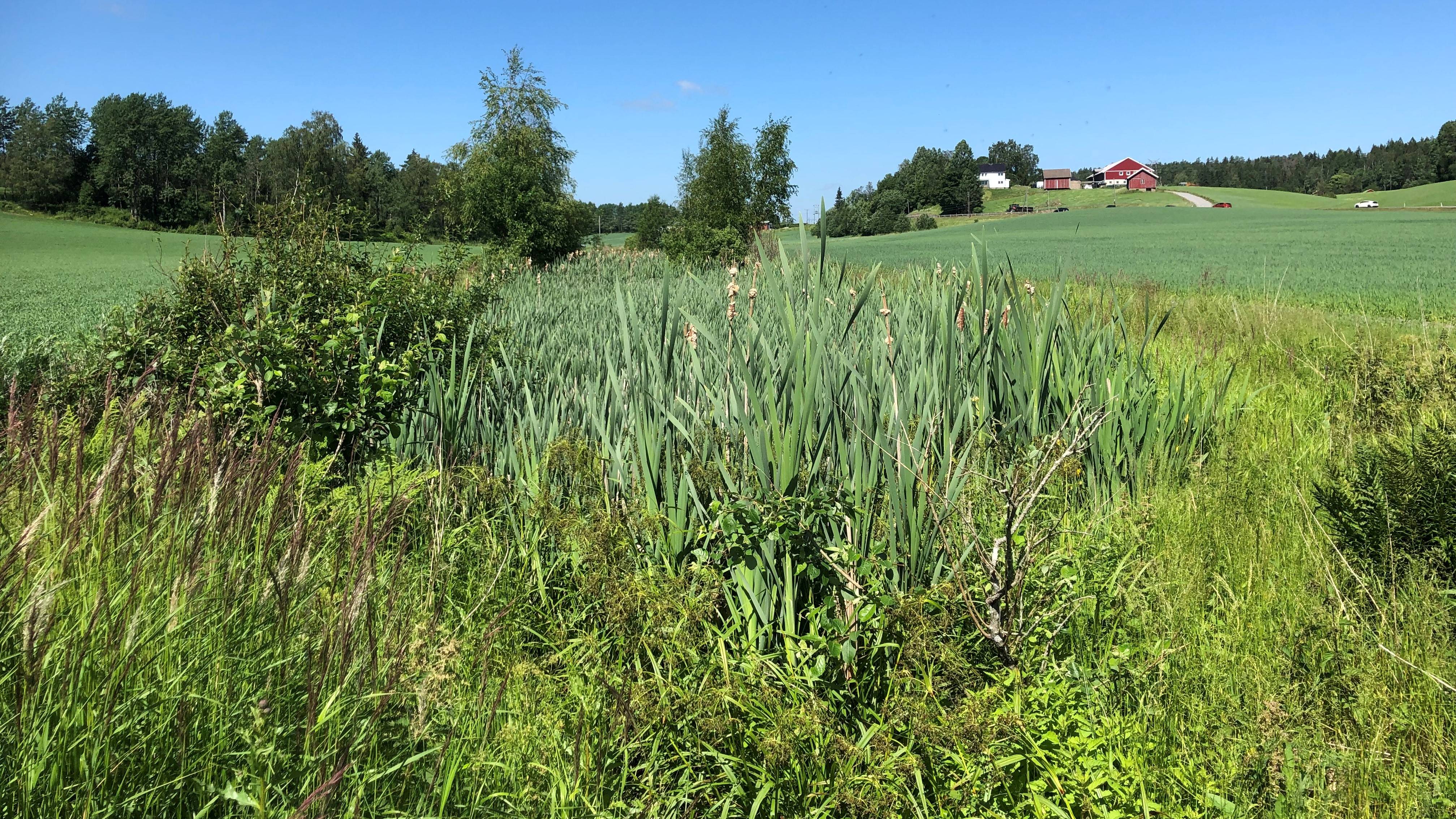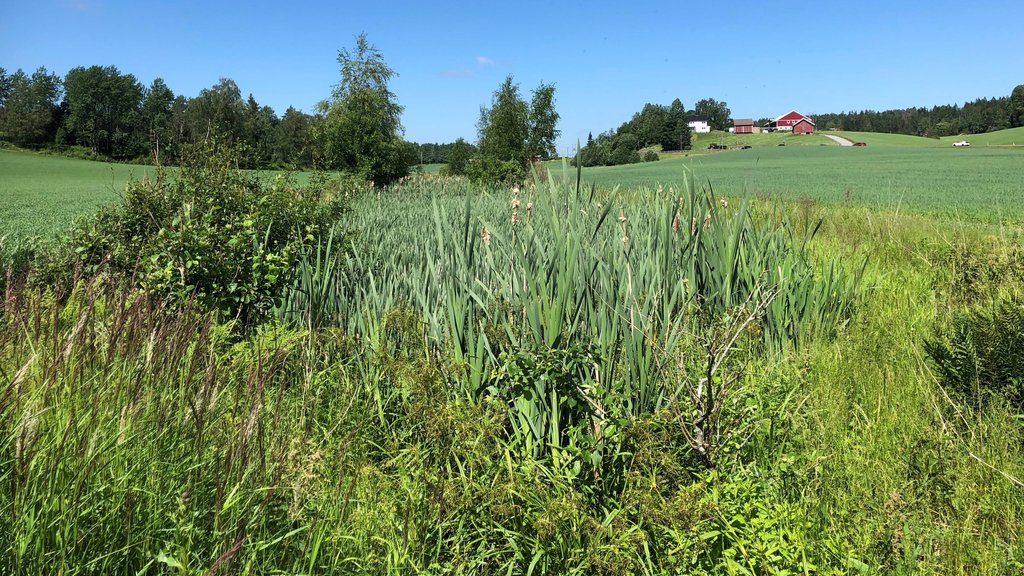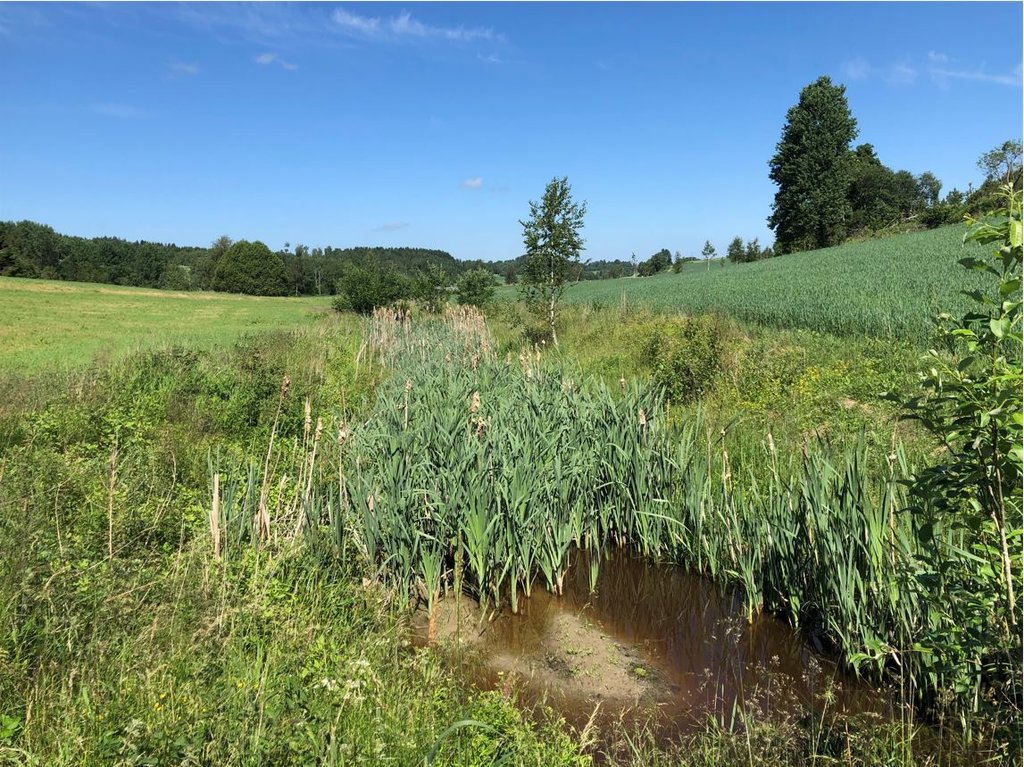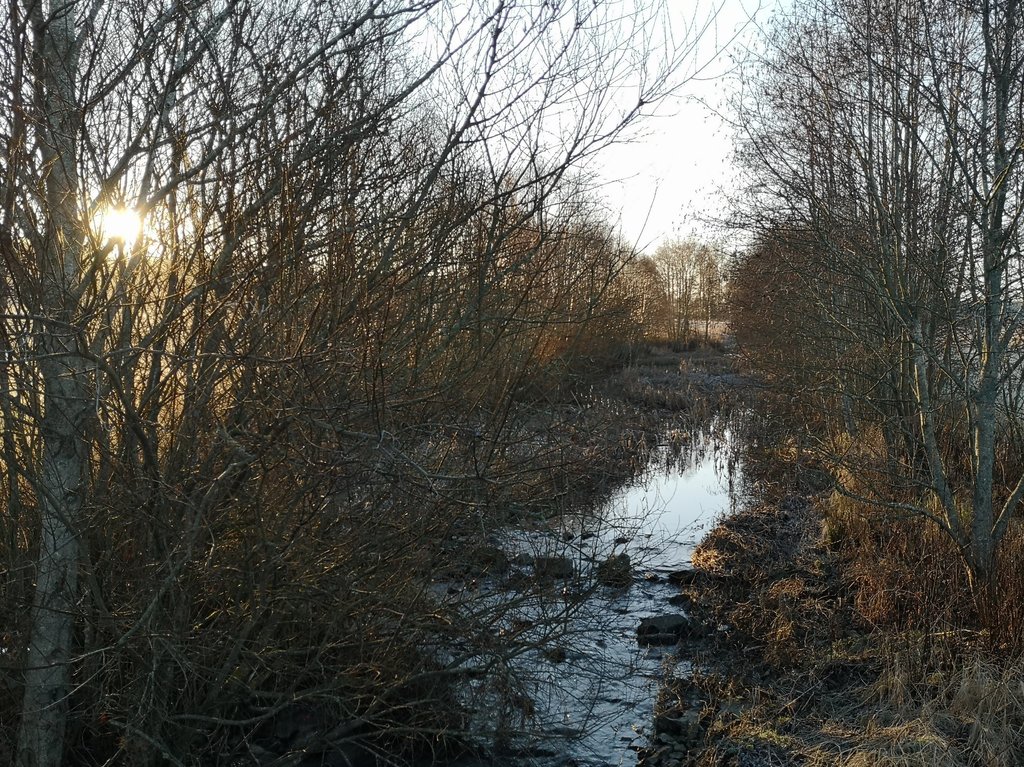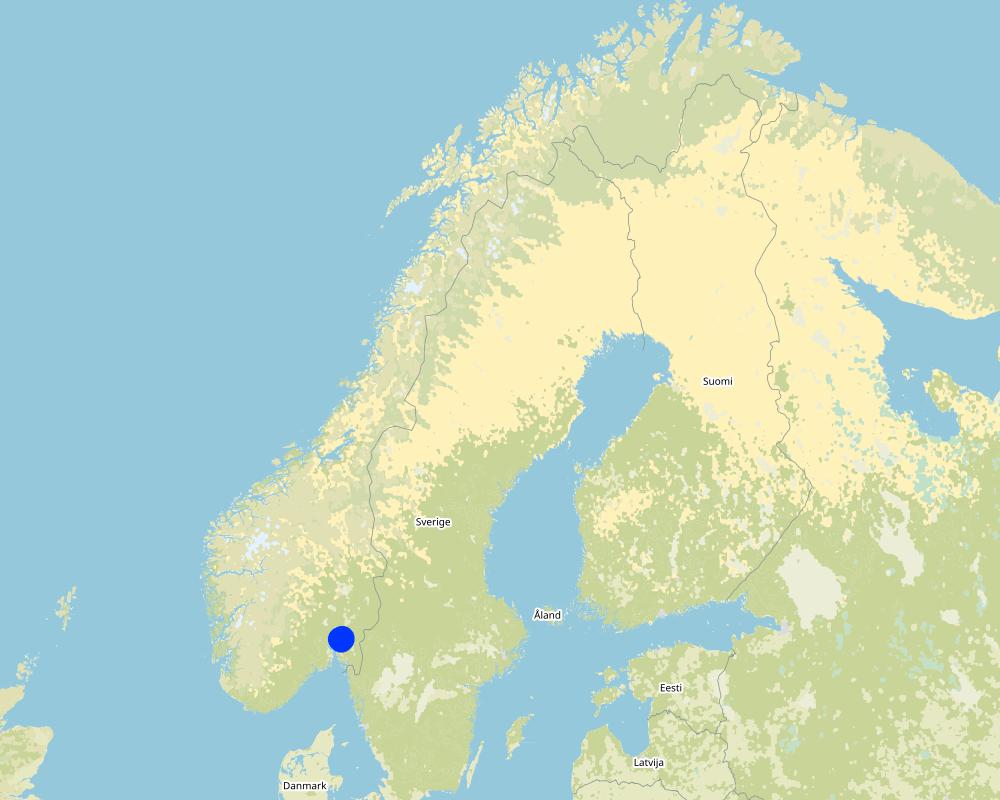Small constructed wetland [挪威]
- 创建:
- 更新:
- 编制者: Dominika Krzeminska
- 编辑者: Anne-Grete Buseth Blankenberg
- 审查者: Rima Mekdaschi Studer, William Critchley, Tatenda Lemann
Fangdam
technologies_5940 - 挪威
查看章节
全部展开 全部收起1. 一般信息
1.2 参与该技术评估和文件编制的资源人员和机构的联系方式
SLM专业人员:
有助于对技术进行记录/评估的项目名称(如相关)
OPtimal strategies to retAIN and re-use water and nutrients in small agricultural catchments across different soil-climatic regions in Europe (OPTAIN)有助于对技术进行记录/评估的机构名称(如相关)
Norwegian Institute of Bioeconomy Research (NIBIO) - 挪威1.3 关于使用通过WOCAT记录的数据的条件
编制者和关键资源人员接受有关使用通过WOCAT记录数据的条件。:
是
1.4 所述技术的可持续性声明
这里所描述的技术在土地退化方面是否存在问题,导致无法被认为是一种可持续的土地管理技术?:
否
1.5 参考关于SLM方法(使用WOCAT记录的SLM方法)的调查问卷
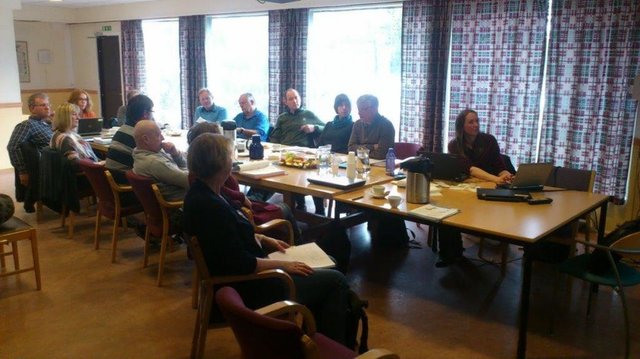
Regional Environmental program [挪威]
Regulations and financial grants for reduction of pollution and promotion of the cultural landscape.
- 编制者: Kamilla Skaalsveen
2. SLM技术的说明
2.1 技术简介
技术定义:
A small constructed wetland is a combination of ponds and vegetation filters, designed mainly to remove sediment and nutrients from streams. It is usually located in first and second order streams in agricultural landscapes.
2.2 技术的详细说明
说明:
Purpose/aim: Small constructed wetlands (CWs) are designed to improve water quality in streams and thus downstream water quality as well. The shape of the constructed wetlands can differ and include different components. Generally, they include a deeper sedimentation pond at the inlet (depth 1.5-2 m), followed by one or more shallow vegetated zones (depth 0.5 m). The sedimentation pond decreases the water velocity to allow particles to settle, while the vegetated, shallower zones act as filters for particles passing the sedimentation pond and protect trapped sediments from re-suspension by stabilizing them with their roots.
Small constructed wetlands treating agricultural runoff have been in operation in Norway since the early 1990s. From 1994-2020, more than 1200 CWs have been established across the country, with the aim of reducing sediment, nutrients, pesticides and other pollutants in agricultural runoff.
Establishment/maintenance: Norwegian CW are designed mainly to remove phosphorus and particles (suspended sediment) with main removal mechanism being sedimentation and filtration, and (to a lesser extent) plant uptake. The CWs treating agricultural runoff are usually constructed by expanding the width of natural streams. At the inlet of the CW, the stream water flows into a sedimentation pond. From the sedimentation pond, water passes through a sprinkling zone, and then through one or more vegetated wetland filters. Due to the typical small-scale Norwegian agriculture and the landscape with rough topography, CWs are often quite small (<0.1 % of the catchment area). The size of CWs is one of the crucial factors limiting overall treatment efficiency.
Over the years, the CW will fill up with sediments, and to maintain good treatment efficiency, it is necessary to empty the CWs periodically (Blankenberg et al. 2013 ).
Benefits/impacts: Norwegian studies show that retention of total phosphorus (TP), both particulate P and dissolved P, increase with increasing area of the CW (Braskerud et al. 2005 ). The retention of sediments, nutrients and pesticides in different CWs also varies due to other factors like design principles, soil types in the catchment, hydraulic loads, and locations along the streams (Braskerud and Blankenberg 2005 ; Blankenberg et al. 2007 , 2008 ; Elsaesser et al. 2011 ). Braskerud ( 2001 ) showed that average retention in six CWs in Norway varied from 45% to 74% for soil particles and 21%–44% for TP. For CW in Skuterud catchment Krzeminska et al (2021) showed that average efficiency of removal was 36% of sediment, 19% of phosphorus and 3% of nitrogen .
Natural / human environment: The information presented here is based on the investigations and/or reports from different part of Norway. For the purpose of OPTAIN project, the technology is further presented in the natural and human environment context of the Kråkstad River catchment - a Norwegian Case Study catchment within OPTAIN project.
The Kråkstad River is mainly situated in Ski commune in South-Eastern parts of Norway. The river catchment is a western tributary of the Vannsjø-Hobøl watercourse, also known as the Morsa watercourse. The Kråkstad River catchment area is c.a 51 km², 43% of which is agricultural land, where mostly cereals are produced on heavy clays soils. The main environmental challenge in the area is water quality (incl. high phosphorus pollution) and soil erosion (incl. riverbank erosion and quick-clay landslides).
2.3 技术照片
2.5 已应用该技术的、本评估所涵盖的国家/地区/地点
国家:
挪威
区域/州/省:
Viken county
有关地点的进一步说明:
The Vansø - Hobøl catchment
具体说明该技术的分布:
- 适用于特定场所/集中在较小区域
技术现场是否位于永久保护区?:
否
注释:
Here we show only some example locations within the Kråkstad catchment
Map
×2.6 实施日期
如果不知道确切的年份,请说明大概的日期:
- 10-50年前
2.7 技术介绍
详细说明该技术是如何引入的:
- 在实验/研究期间
- SMIL (Special Environmental measures in agriculture)
注释(项目类型等):
Constructed wetlands are part of SMIL subsidy system (Special Environmental measures in Agriculture)
3. SLM技术的分类
3.1 该技术的主要目的
- 结合其他技术保护流域/下游区域
- 适应气候变化/极端天气及其影响
- 减缓气候变化及其影响
3.2 应用该技术的当前土地利用类型
同一土地单元内混合使用的土地::
否

农田
- 一年一作
年作 - 具体指明作物:
- 谷类 - 其他
- small grains
每年的生长季节数:
- 1
具体说明:
Longest growing period in days: 135. Longest growing period from month to month: May to mid September
采用间作制度了吗?:
否
采用轮作制度了吗?:
否

森林/林地
- Natrual forest

水道、水体、湿地
- 排水管道、水道
3.3 由于技术的实施,土地使用是否发生了变化?
由于技术的实施,土地使用是否发生了变化?:
- 否(继续问题3.4)

水道、水体、湿地
- 池塘、大坝
- 沼泽、湿地
3.4 供水
该技术所应用土地的供水:
- 雨养
3.5 该技术所属的SLM组
- 地表水管理(泉、河、湖、海)
- 湿地保护/管理
3.6 包含该技术的可持续土地管理措施

结构措施
- S5:大坝、集水斗、水池
3.7 该技术强调的主要土地退化类型

水质恶化
- Hp:地表水水质下降
3.8 防止、减少或恢复土地退化
具体数量名该技术与土地退化有关的目标:
- 防止土地退化
- 减少土地退化
4. 技术规范、实施活动、投入和成本
4.1 该技术的技术图纸
技术规范(与技术图纸相关):
Components of typical constructed wetland in Norway: (a) sedimentation pond, (b) wetland filter, (c) overflow zone covered with vegetation or stones and (d) outlet basin.
作者:
B.C. Braskerud (2002)
日期:
26/01/2022
技术规范(与技术图纸相关):
Schematic representation of constructed wetland in Skuterud catchment.
作者:
Anne-Grete Buseth Blankenberg (e.g. in the report from 2021)
日期:
26/01/2022
4.2 有关投入和成本计算的一般信息
具体说明成本和投入是如何计算的:
- 每个技术单元
指定单位:
constructed wetland - area of water surface
指定单位面积(如相关):
<0.1 % of the catchment area. For Skuterud wetland it is 2300 m2
其它/国家货币(具体说明):
NOK
如相关,注明美元与当地货币的汇率(例如1美元=79.9巴西雷亚尔):1美元=:
8.89
注明雇用劳工的每日平均工资成本:
1440
4.3 技术建立活动
| 活动 | 时间(季度) | |
|---|---|---|
| 1. | Construction of the wetland |
4.4 技术建立所需要的费用和投入
如果您无法分解上表中的成本,请估算建立该技术所需要的总成本。:
87500.0
如果土地使用者负担的费用少于100%,请注明由谁负担其余费用:
The landowners can apply for subsidies to establish and maintenance constructed wetland (70% support of the cost), within SMIL system (Special Environmental measures in Agriculture). Local county authorities are responsible for the administration of these schemes.
注释:
The information about cost are coming from Blankenber et al (2016):
During a period of 20 years (1994 - 2014) the government has spent in total about 88 million Norwegian crowns (NOK) to subsidize the CWs for agricultural runoff, and total
costs are assumed to be about 150 mill NOK. Costs per CW varies from about 26.000 NOK to 124.000 NOK, and average cost per CW is approximately 87.500 NOK.
4.5 维护/经常性活动
| 活动 | 时间/频率 | |
|---|---|---|
| 1. | Maintenance - emptying the ponds | every 5-20 years depending on dimensions of the ponds. |
| 2. | Maintenance of the damming/barriers | when needed |
| 3. | Maintenance of stream banks | when needed |
4.6 维护/经常性活动所需要的费用和投入(每年)
如果您无法分解上表中的成本,请估算维护该技术所需要的总成本。:
41000.0
如果土地使用者负担的费用少于100%,请注明由谁负担其余费用:
The landowners can apply for subsidies to establish and maintenance constructed wetland (70 % support of the cost), within SMIL system (Special Environmental measures in Agriculture). Local county authorities are responsible for the administration of these schemes.
注释:
The information is coming from (Hauge et al 2008):
The cost of maintenance of CWs estimated based n data from 2008 from 16 ponds established or planned in Morsa water region (that includes Kråkstad catchment). The (estimated) costs varied from 5,67 NOK/m2 of water surface area up to 49 NOK/m2 of water surface area
Given number of 41000 NOK is calculated for SKuterud CW (2300 m2 of water surface area).
4.7 影响成本的最重要因素
描述影响成本的最决定性因素:
The most important factor affecting the costs of constructed wetland is the size. Larger constructed wetlands have lower establishment costs per m2 of water surface area. In terms of operating costs for capture ponds - mainly emptying the sedimentation pond - it is assumed that the cost per emptying is more or less independent of the size of the sedimentation pond. This is because a large component in the emptying cost is assumed to be the transport of the machinery and the removal of the excavated mass.
The landowners can apply for subsidies to establish and maintenance constructed wetland (70% support of the cost), within SMIL system (Special Environmental measures in Agriculture). Local county authorities are responsible for the administration of these schemes.
5. 自然和人文环境
5.1 气候
年降雨量
- < 250毫米
- 251-500毫米
- 501-750毫米
- 751-1,000毫米
- 1,001-1,500毫米
- 1,501-2,000毫米
- 2,001-3,000毫米
- 3,001-4,000毫米
- > 4,000毫米
农业气候带
- 半湿润
- 半干旱
5.2 地形
平均坡度:
- 水平(0-2%)
- 缓降(3-5%)
- 平缓(6-10%)
- 滚坡(11-15%)
- 崎岖(16-30%)
- 陡峭(31-60%)
- 非常陡峭(>60%)
地形:
- 高原/平原
- 山脊
- 山坡
- 山地斜坡
- 麓坡
- 谷底
垂直分布带:
- 0-100 m a.s.l.
- 101-500 m a.s.l.
- 501-1,000 m a.s.l.
- 1,001-1,500 m a.s.l.
- 1,501-2,000 m a.s.l.
- 2,001-2,500 m a.s.l.
- 2,501-3,000 m a.s.l.
- 3,001-4,000 m a.s.l.
- > 4,000 m a.s.l.
说明该技术是否专门应用于:
- 不相关
5.3 土壤
平均土层深度:
- 非常浅(0-20厘米)
- 浅(21-50厘米)
- 中等深度(51-80厘米)
- 深(81-120厘米)
- 非常深(> 120厘米)
土壤质地(表土):
- 中粒(壤土、粉土)
- 细粒/重质(粘土)
土壤质地(地表以下> 20厘米):
- 中粒(壤土、粉土)
- 细粒/重质(粘土)
表土有机质:
- 中(1-3%)
5.4 水资源可用性和质量
地下水位表:
< 5米
地表水的可用性:
好
水质(未处理):
仅供农业使用(灌溉)
水质请参考::
地下水和地表水
水的盐度有问题吗?:
否
该区域正在发生洪水吗?:
是
规律性:
频繁
5.5 生物多样性
物种多样性:
- 低
栖息地多样性:
- 低
5.6 应用该技术的土地使用者的特征
定栖或游牧:
- 定栖的
生产系统的市场定位:
- 混合(生计/商业)
- 商业/市场
非农收入:
- 收入的10-50%
- > 收入的50%
相对财富水平:
- 平均水平
- 丰富
个人或集体:
- 个人/家庭
机械化水平:
- 机械化/电动
性别:
- 女人
- 男人
土地使用者的年龄:
- 青年人
- 中年人
说明土地使用者的其他有关特征:
Population density: < 10 persons/km2
Annual population growth: < 0.5%
10% of the land users are rich and own 10% of the land.
90% of the land users are average wealthy and own 90% of the land.
5.7 应用该技术的土地使用者使用的平均土地面积
- < 0.5 公顷
- 0.5-1 公顷
- 1-2 公顷
- 2-5公顷
- 5-15公顷
- 15-50公顷
- 50-100公顷
- 100-500公顷
- 500-1,000公顷
- 1,000-10,000公顷
- > 10,000公顷
这被认为是小规模、中规模还是大规模的(参照当地实际情况)?:
- 中等规模的
5.8 土地所有权、土地使用权和水使用权
土地所有权:
- 个人,有命名
土地使用权:
- 社区(有组织)
- 个人
用水权:
- 自由进入(无组织)
5.9 进入服务和基础设施的通道
健康:
- 贫瘠
- 适度的
- 好
教育:
- 贫瘠
- 适度的
- 好
技术援助:
- 贫瘠
- 适度的
- 好
就业(例如非农):
- 贫瘠
- 适度的
- 好
市场:
- 贫瘠
- 适度的
- 好
能源:
- 贫瘠
- 适度的
- 好
道路和交通:
- 贫瘠
- 适度的
- 好
饮用水和卫生设施:
- 贫瘠
- 适度的
- 好
金融服务:
- 贫瘠
- 适度的
- 好
6. 影响和结论性说明
6.1 该技术的现场影响
社会经济效应
生产
生产区域
生态影响
水循环/径流
水质
土壤
土壤流失
注释/具体说明:
The sediment taken out from the sedimentation pond can be distributed on the agricultural field - soil recovery.
养分循环/补给
注释/具体说明:
The sediment taken out from the sedimentation pond can be distributed on the agricultural field - nutrient recovery.
生物多样性:植被、动物
植物多样性
动物多样性
栖息地多样性
6.2 该技术的场外影响已经显现
下游淤积
注释/具体说明:
Better water quality downstream
缓冲/过滤能力
6.3 技术对渐变气候以及与气候相关的极端情况/灾害的暴露和敏感性(土地使用者认为的极端情况/灾害)
渐变气候
渐变气候
| 季节 | 增加或减少 | 该技术是如何应对的? | |
|---|---|---|---|
| 年温度 | 增加 | 好 | |
| 年降雨量 | 增加 | 好 |
气候有关的极端情况(灾害)
水文灾害
| 该技术是如何应对的? | |
|---|---|
| 比较和缓的(河道)洪水 | 好 |
6.4 成本效益分析
技术收益与技术建立成本相比如何(从土地使用者的角度看)?
短期回报:
稍微积极
长期回报:
稍微积极
技术收益与技术维护成本/经常性成本相比如何(从土地使用者的角度看)?
短期回报:
稍微积极
长期回报:
稍微积极
6.5 技术采用
- 1-10%
在所有采用这项技术的人当中,有多少人是自发的,即未获得任何物质奖励/付款?:
- 0-10%
注释:
Adaptation of technology is stimulated by subsidies scheme.
Subsidies for the establishment of constructed wetlands are part of the SMIL system (Special Environmental Measures in Agriculture). Both the initial investment for construction and
subsequent maintenance may be paid by subsidies (70% support of the cost). During the period from 1994 to 2012 subsidies for in total 941 sedimentation ponds and constructed wetlands were given in Norway (Greipsland, 2016)
6.6 适应
最近是否对该技术进行了修改以适应不断变化的条件?:
否
6.7 该技术的优点/长处/机会
| 土地使用者眼中的长处/优势/机会 |
|---|
| Improvement of water quality downstream |
| 编制者或其他关键资源人员认为的长处/优势/机会 |
|---|
| Improve of water quality downstream |
| Resource recovery |
6.8 技术的弱点/缺点/风险及其克服方法
| 土地使用者认为的弱点/缺点/风险 | 如何克服它们? |
|---|---|
| Loss of productive cropland | |
| Need for maintenance |
7. 参考和链接
7.1 信息的方法/来源
- 实地考察、实地调查
Several in different areas in Norway. See for example:
- Hauge et al (2008) Bioforsk Report vol 3 Nr 140 (in Norwegian)
- Krzeminska et al (2021) Nibio Report 7(101) (in Norwegian)
- 与SLM专业人员/专家的访谈
NIBIO, and its SLM specialists, has been conducting many national projects related to monitoring constructed wetlands in agricultural catchments.
- 根据报告和其他现有文档进行编译
There are several reports and research publication available. Some examples below:
- Braskerud, B.C et al (2001) Dr. Scient. Theses 2001:10,
Agriculture University of Norway, Ås, Norway.
- Braskerud, B. C. (2002). Water Science and Technology Vol 45 No 9 pp 77–85.
- Braskerud, B.C et al (2005).Journal of Environmental Quality , 34(6), 2145–2155.
- Braskerud B.C. and Blankenberg A-G. B (2005) Jordforsk book nr. 48/05. 145: 126–128.
- Blankenberg, A.-G. B et al. (2007) Water Science and Technology, 55(3), 37–44.
- Blankenberg, A.-G. B et al. (2008) Desalination, 226, 114–120.
- Hauge et al (2008) Bioforsk Report vol 3 Nr 140 (in Norwegian)
- Blankenberg et al (2016) in Natural and Constructed Wetlands. DOI 10.1007/978-3-319-38927-1_2
- Krzeminska et al (2021) Nibio Report 7(101) (in Norwegian)
(现场)数据是什么时候汇编的?:
26/01/2022
7.2 参考可用出版物
标题、作者、年份、ISBN:
Hauge A., Blankenberg A-G. B., Hanserud O.H. 2008. Evaluering av fangdammer som miljøtiltak i SMIL. Bioforsk Rapport Vol. 3 Nr. 140 2008.
可以从哪里获得?成本如何?
https://evalueringsportalen.no/
标题、作者、年份、ISBN:
Blankenberg A-G.B., Paruch A.M., Paruch L., Deelstra J., Haarstad K. 2016. Nutrients tracking and removal in constructed wetlands treating catchment runoff in Norway. In: Vymazal J. (ed) Natural and Constructed Wetlands. Springer International Publishing Switzerland, pp. 23-40. DOI 10.1007/978-3-319-38927-1_2
可以从哪里获得?成本如何?
Springer Book
标题、作者、年份、ISBN:
Krzeminska D., Blankenberg A-G., Bechmann M. Deelstra J. 2021. Effekt av fangdam i et endret klima. NIBIO-rapport;7(101)2021
可以从哪里获得?成本如何?
NIBIO website
标题、作者、年份、ISBN:
Greipsland I.2016. Norwegian policy and practices regarding mitigation measures in agriculture.
可以从哪里获得?成本如何?
NIBIO website
7.3 链接到网络上的相关信息
标题/说明:
Hauge A., Blankenberg A-G. B., Hanserud O.H. 2008. Evaluering av fangdammer som miljøtiltak i SMIL. Bioforsk Rapport Vol. 3 Nr. 140 2008.
URL:
https://evalueringsportalen.no/evaluering/evalueringen-av-fangdammer-som-miljotiltak-i-smil/Rapport%20Evaluering%20av%20fangdammer%20-%20Bioforsk%20Jord%20og%20Milj%C3%B8.pdf/@@inline
标题/说明:
Krzeminska D., Blankenberg A-G., Bechmann M. Deelstra J. 2021. Effekt av fangdam i et endret klima. NIBIO-rapport;7(101)2021
URL:
https://nibio.brage.unit.no/nibio-xmlui/bitstream/handle/11250/2757116/NIBIO_RAPPORT_2021_7_101.pdf?sequence=4&isAllowed=y
标题/说明:
Greipsland I.2016. Norwegian policy and practices regarding mitigation measures in agriculture.
URL:
https://nibio.brage.unit.no/nibio-xmlui/bitstream/handle/11250/2387569/NIBIO_POP_2016_2_21.pdf?sequence=3&isAllowed=y
链接和模块
全部展开 全部收起链接

Regional Environmental program [挪威]
Regulations and financial grants for reduction of pollution and promotion of the cultural landscape.
- 编制者: Kamilla Skaalsveen
模块
无模块


